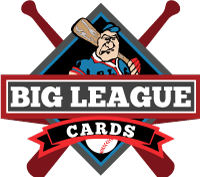Inside the Pack: Don’t Get Ripped Off When Buying Vintage Sports Cards
Sports cards can be a high-dollar business, and where there’s lots of money, there’s bound to be fraud. In fact, just last week, a Michigan man was sentenced to 30 months in jail for selling fake sports cards.
It’s impossible to be 100% sure that something is legitimate if buying online, but you can get really close to certain when buying in person. Use these tips to help determine if a vintage card you’re purchasing is real.
-Feel the card. If you can, take the card out and examine the paper stock. It shouldn’t be thick like cardboard, and, with some exceptions for certain pre-war sets, shouldn’t be paper thin. The paper shouldn’t feel glossy, either. Vintage paper also shouldn’t be stark white. If the card you’re examining has frayed corners or paper loss and the paper showing underneath is bright white, that’s not a good thing.
-Examine the ink. A loupe is best, but the magnifying power of your phone’s camera works in a pinch, too. Older ink printing differs from modern printing. You should see a pattern called a rosette pattern, which is the way the dots come together to form a little pattern. You should never, however, see dots of color in solid black ink or white borders. Note that even modern counterfeits will have a rosette pattern, which means you should also…
-Compare to a known example. The best way to tell if a card is fake is to compare it to a card known to be real. You could create a collection of low grade commons from some popular vintage sets so that you have a “database” to pull from. Compare the paper, ink, and amount of light that passes through the card.
-Search for information on fakes for that particular set or card. Some high-profile sets or cards are so prolifically faked that webpages are devoted to explaining the obvious tells.
-Use your instinct. The old adage of something being too good to be true generally applies. Most groups that have only ungraded high dollar cards, especially from various sets, are immediately suspicious. A collection with a lot of cards from one or two sets, including common cards and star cards, is much more believable.




